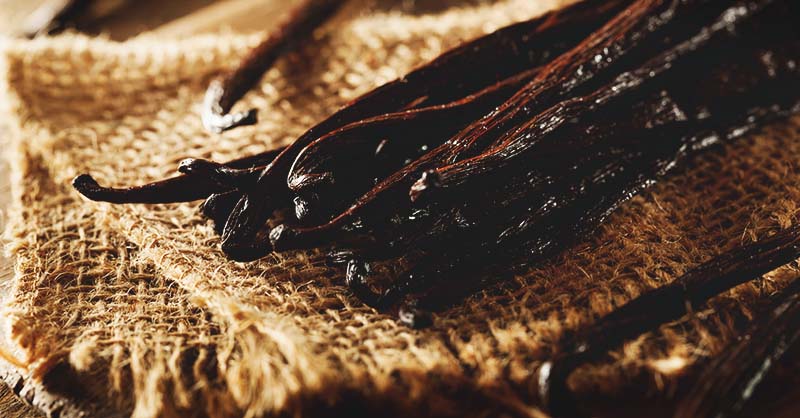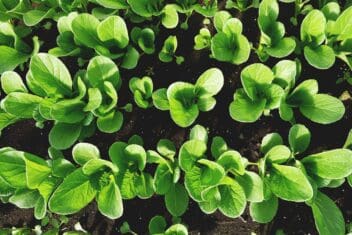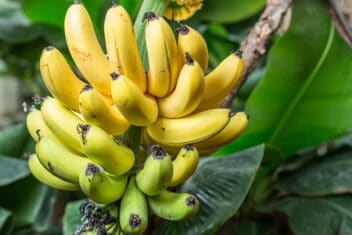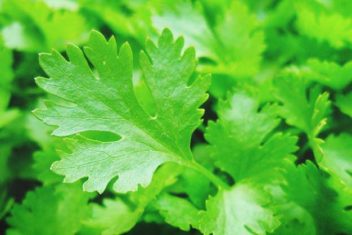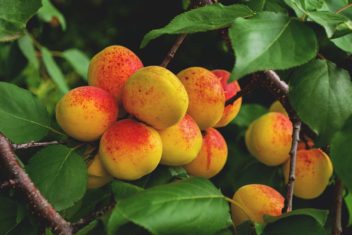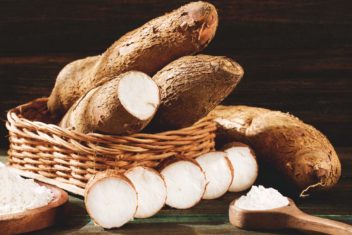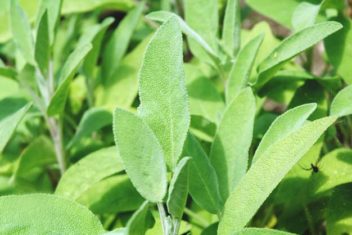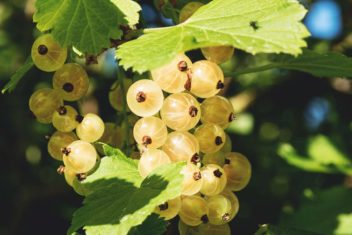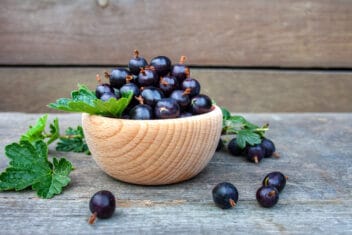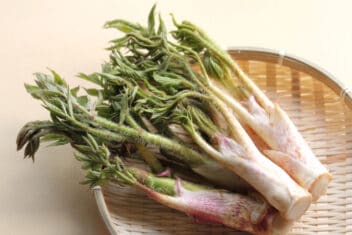Do you like to make your own extracts? After learning how easy it is to do, it’s almost crazy not to make them yourself. However, purchasing vanilla beans can be more expensive than buying the vanilla extract from the store. Why not try growing your own vanilla?
Don’t be intimidated – it’s not as hard as you might think.
Plus, fresh beans straight out of the garden are intensely flavorful and you can sell them for a lot of money at the farmer’s market.
Here’s how to get started.
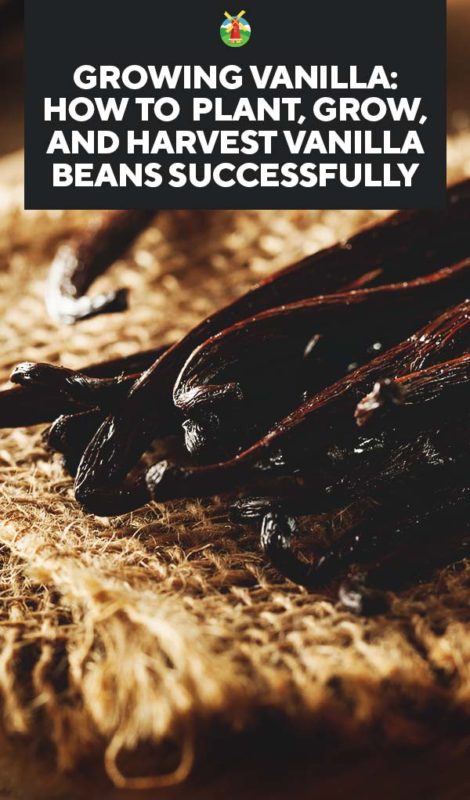
Vanilla Plant Info
- Hardiness Zones: 10, 11
- Soil: Sandy loam, pH between 6.6-7.5, well-drained
- Sun Exposure: Partial shade
- Planting: Plant the cuttings in spring when the temperature is warm
- Spacing: 6.6-feet between plants and rows
- Depth: 1-inch
- Best Companions: Banana, arrowroot
- Worst Companions: Beans, peas
- Watering: Water moderately, allow 2-3-inches to dry before watering again
- Fertilizing: Fertilize with orchid fertilizer every 2 weeks during the spring and summer
- Common Problems: Anthracnose, black rot, rust, root and stem rot, mealybugs, spider mites
- Harvest: Harvest pods when they are at least 6-inches long, 9-10 months after planting
Varieties of Vanilla Beans
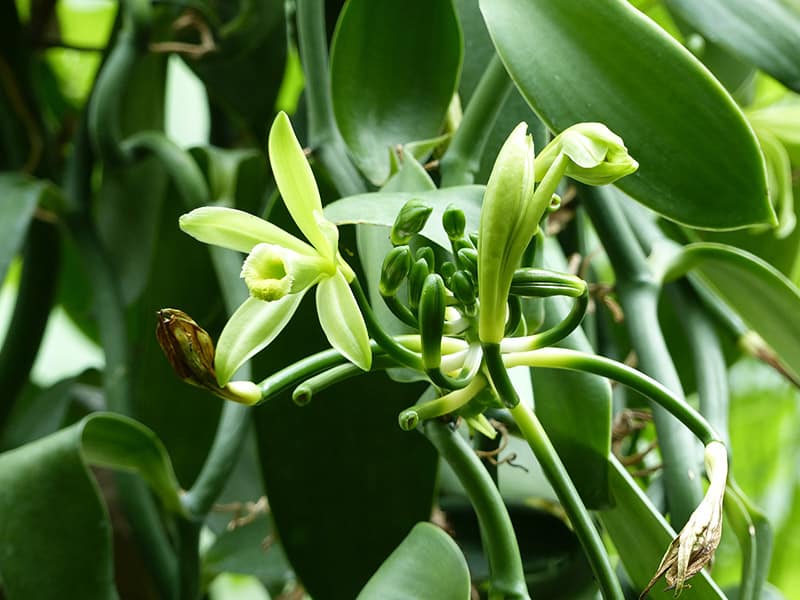
There are different varieties of vanilla. They each have a unique flavor and, as a result, pair better with different dishes. Here are some of the various options for vanilla beans:
1. Madagascar
The Madagascar Bourbon vanilla bean is what most of us associate with the typical vanilla extract. It has a sweet, classic flavor that is great for baking or using in your favorite comfort foods.
2. Mexican
Mexican vanilla beans are an interesting variety. They have the smooth, classic flavor of vanilla but with an added kick of spice. It’s an excellent choice for using in chocolate dishes, cinnamon-flavored dishes, or barbecue sauces.
3. Indonesian
This variety of vanilla has a milder, earthy flavor with an added touch of smoke. It’s a good option for baking or for pairing with chocolate.
4. Tahitian
The Tahitian variety is fun. It has a fruity flavor with a hint of cherry undertones. It’s an excellent option for use in ice cream, paired with fruit, use din puddings, or in beverages.
5. Indian
The Indian variety is known for having a bolder flavor. Because of the boldness, it’s a great option to be paired with chocolate.
6. Tonga
Tonga vanilla has less spice and more of a woody flavor to it. It’s great when paired with dishes that highlight raisins and figs.
Planting Vanilla Beans
Vanilla beans aren’t the easiest plants to grow. It takes some trial and error on your part to figure out what works for you. as a gardener, You also might need to make some adjustments based on your planting zone.
When you decide to grow vanilla beans, it’s best to purchase the plant. The reason being, vanilla plants grown from seed take 3-5 years before they can produce pods.
It can be difficult to locate these plants locally. You can search via the internet for either vanilla bean plant or vanilla orchid. Do your research before purchase to make sure you’re getting a good product.
Also, be sure to check that the plant you’re purchasing is 3-5 years old. Otherwise, you’ll be waiting for years to harvest from your plant.
1. Transplanting
Because there are few areas with the right climate for vanilla in the US and Canada, the best way to grow it is in a container.
After your plant has arrived, you’ll need to transplant it. You don’t want to choose a huge pot, but pick a container that is approximately 2 times larger than the plant itself.
When you’ve found the proper pot, fill it half full of orchid potting soil. If you can’t find this particular soil, you can use half bark and half regular potting soil.
Gently place the plant in the pot and cover the roots with soil. Add a lattice or stick to support the plant. This will give it a place to climb as well since vanilla bean plants are a type of orchid and have vines.
2. The Right Location
The most important part of planting is providing the appropriate environment. For instance, you can leave your vanilla plant in the house in a typical setting while providing water and fertilizer.
In most cases, the plant will survive and do fine as a typical house plant. The problem with this is the vanilla plant won’t bloom.
If the plant doesn’t bloom, there’s nothing to pollinate, and no vanilla pods will form. Your plant must be raised in the proper environment to encourage flowering.
The ideal location is one where the plant remains at temperatures close to or above 60°F. They like high humidity and bright, indirect sunlight.
If you don’t live in the right environment, this can be accomplished within a greenhouse, a sunroom, or in a warm room under grow lights. Everyone’s situation is different.
Caring for Your Vanilla Plant
Vanilla plants have specific needs that must be met for the plant to thrive and produce. Here’s what you need to give your vanilla plant:
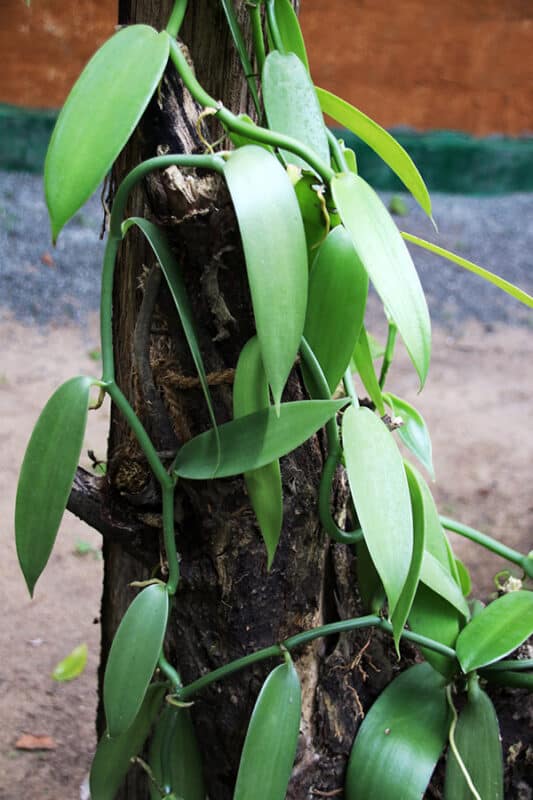
1. Water
Vanilla plants require water, but be careful to ensure they don’t become overwatered. The top layer of the soil should be moist but don’t water to the point where the entire pot of soil is soaked.
This will make the roots too wet, and they’ll rot. It’s also a good idea to gently mist the plant with water from a spray bottle every day or every other day to keep it moist enough to be happy while also preventing overwatering.
2. Fertilizer
Vanilla plants should be fertilized once every 2 weeks during the spring and summer months. Use an orchid fertilizer and follow the instructions on the package.
3. Pollination
To produce beans, the plant will need to be pollinated.
Unfortunately, the bees that pollinate vanilla plants in the wold are almost extinct. For this reason, you can’t depend on the bees around your home. You’ll have to pollinate the plant yourself, or it won’t produce.
You hand pollinate by removing pollen from the female part of the plant known as the anther. You can use a toothpick to collect the pollen from this section of the plant.
You’ll apply the pollen to the male part of the plant known as the stigma. The stigma has a shield around it which will need to be peeled back to access it.
The pollinating process is best if performed in the morning hours. When you’ve completed the process, you should begin to see pods forming within a week.
If you don’t, the process didn’t work, and you’ll have to try again. Once the pods are forming, it takes approximately 9 months for them to be complete.
This video walks you through the process.
Problems When Growing Vanilla
Vanilla plants have only a few pests and diseases to watch for when growing them.
1. Root Rot
One of the most significant hardships in caring for a vanilla plant is ensuring you don’t overwater it. Because it’s a type of orchid, they prefer dry spells between watering sessions.
If the roots are too wet, they’ll rot. Keep this in mind when watering your plant or if you begin to see signs of struggle with your plant.
2. Slugs and Snails
The only pests that will try to bother your vanilla plant are snails and slugs. They like to munch on the roots and leaves of the plant.
If they’re a concern for you, consider sprinkling diatomaceous earth around the base of the plant, or coffee grounds or crushed eggshells. This should slice the pests as they crawl around your plant.
Companion Plants for the Vanilla Plant
Every plant has certain plants that they thrive when planted near. The best companions for a vanilla plant are:
- Banana plant
- Arrowroots
Vanilla plants also have specific plants that should be avoided. These plants are:
- Peas
- Beans
Harvesting Vanilla Beans
There are specific steps you’ll need to follow when harvesting your vanilla beans to ensure you can use them correctly. You should also be aware of how to store the vanilla beans properly. Here’s how you harvest and store your vanilla beans:
1. Harvest at the Proper Time
Harvesting vanilla beans is probably the easiest part of the growing process. You can use scissors or pruning shears to detach the pods from the plant.
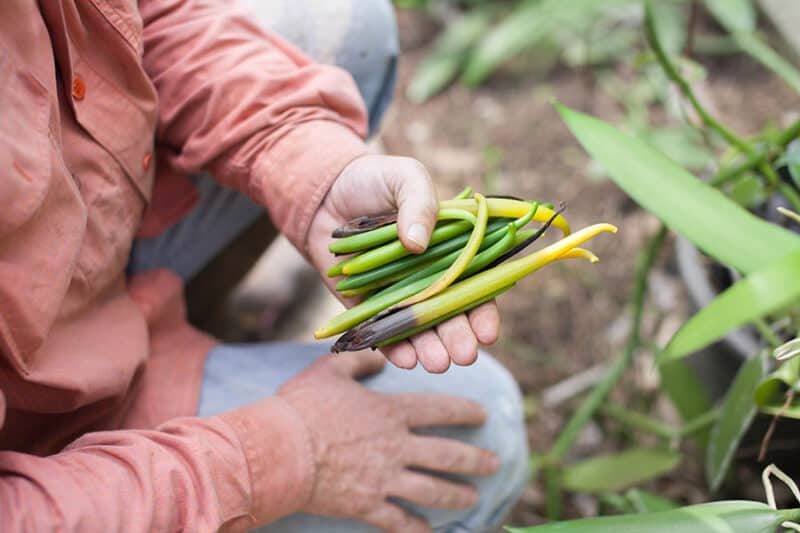
You’ll know they’re ready for harvest when the tips of the pods begin to turn yellow.
2. Sweat the Beans
When the pods have been harvested, they’ll need to go through a process referred to as sweating. Wrap the beans in a heavy blanket or towel and leave them outside in a dry location for 3-4 days.
After the days have passed, check the beans. They should be a light shade of brown.
3. Sun Dry the Beans
Once the beans have sweat for a while, it’s time to sundry them. Leave the beans in the sun for a month. When the process is complete, they should have the same texture as leather and have turned a dark brown.
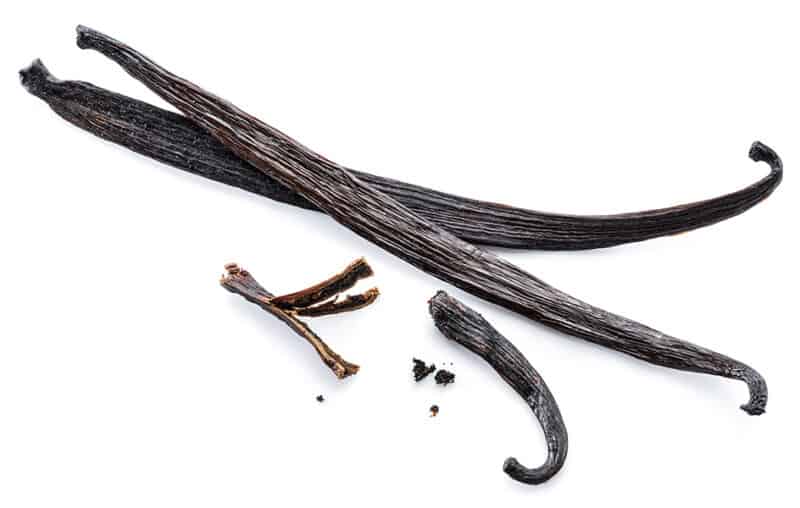
When they’ve achieved this look and feel, they’re ready for storage or use.
4. Store Properly
Storing vanilla beans is simple. They should be stored in an air-tight container in your pantry, root cellar, or basement.
The idea is to store them in an area where it’s cool, dark, and dry. Check them occasionally to make sure they’re still holding up and not developing mold.
Be sure you don’t store your vanilla beans in the refrigerator. This will cause your beans to dry out and also cause excess moisture to rise to the surface.
When this occurs, the beans will begin to mold and no longer be of any use. After more than 9 months of work to raise the plant and harvest the pods, you don’t want to lose them to mold.
Well, you now know the entire process of raising vanilla beans from growing to caring, harvesting the pods, and storing them too.
